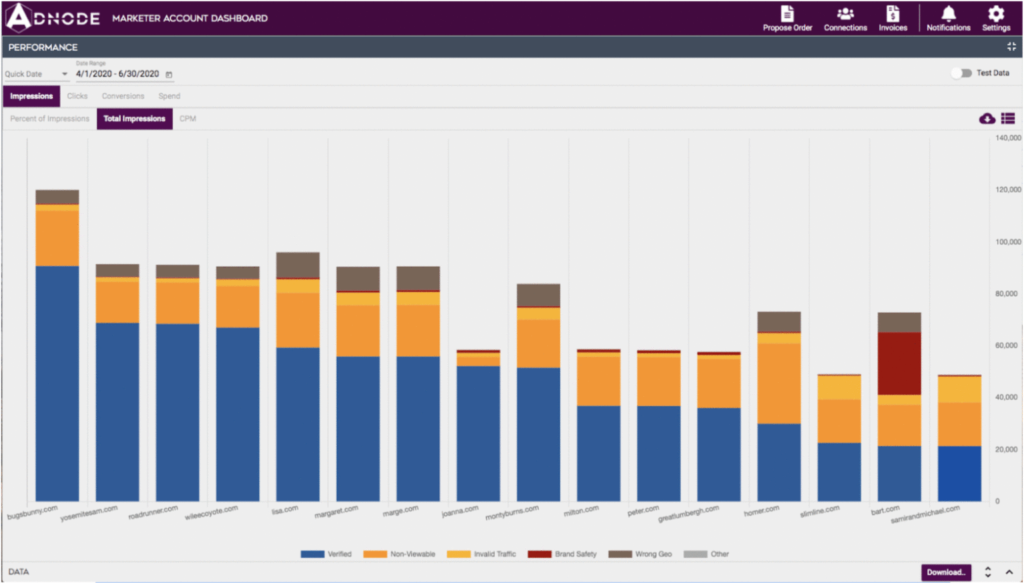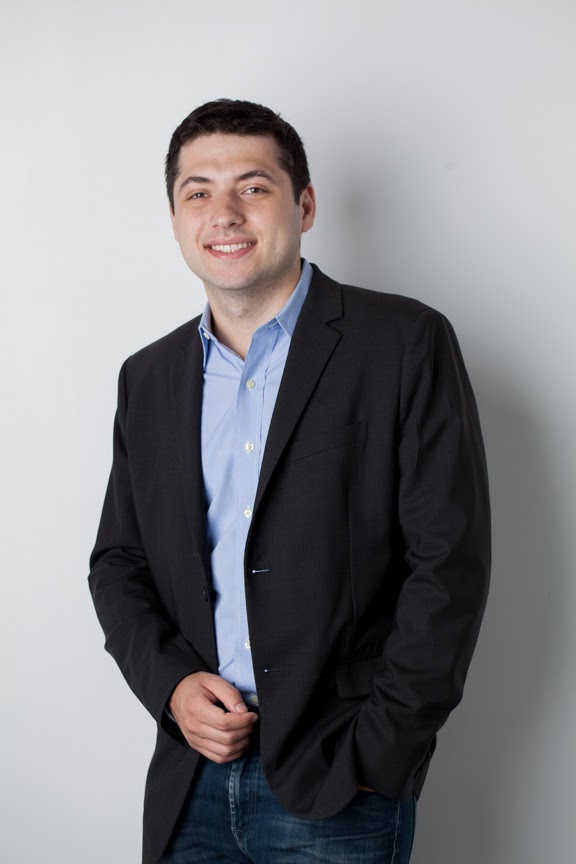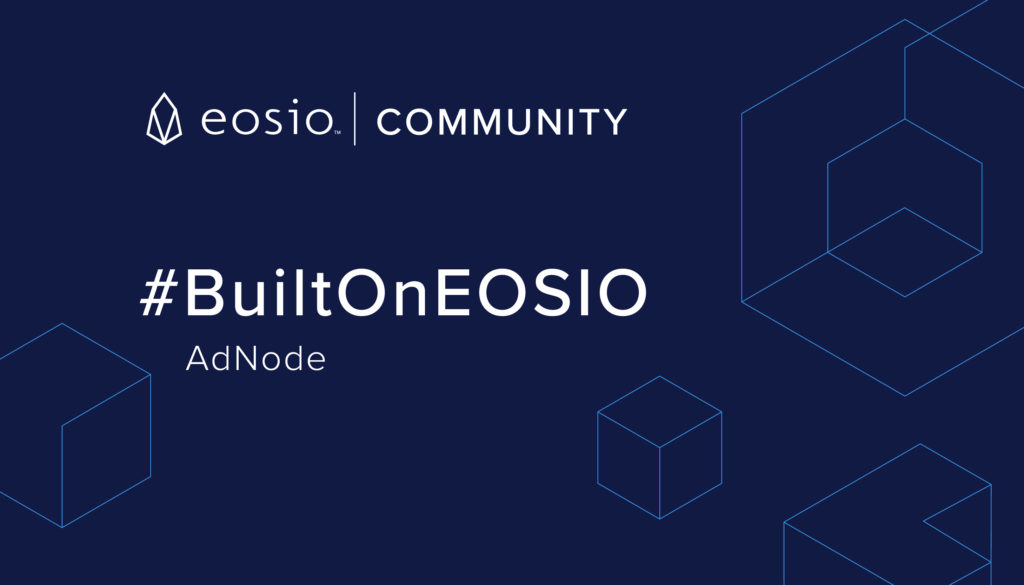EOSIO makes it possible for EOS VC grant recipient AdNode to help agencies with the issue of wasteful spending and fraud in the multibillion dollar global digital ad space. By automating the reconciliation process for digital advertising, AdNode improves the dynamic of how ad buyers and sellers cooperate.
AdNode Co-founder and CEO, Michael Rodov, started the company after experiencing the problems in digital advertising first-hand. He spent 14 years in the digital media industry and saw how multimillion dollar budgets often hinged on Excel pivot tables.
Michael describes the opportunity he saw: “In my mind, low-level ad operations and media planning can be completely automated to support a team to focus on higher value activities like studying the data and making it better.”
Wading through Multiple Data Sets
The advertising space is a multifaceted marketplace. It is dominated by ad agencies who purchase ads from publishers on behalf of an advertiser. They determine billing and invoicing for campaigns with data sets provided by ad measurement firms to see what is viewed, not viewed, human, or brand safe.
On the other hand, publishers that own the websites selling ads also calculate billing and invoicing with their own data sets, often using different measurement vendors.
For the marketplace to function properly, advertisers, agencies, measurement vendors, and publishers all must align and agree on the numbers. According to Michael, this is where the process can become complicated. “Typically those numbers don’t match up and there are inconsistencies and discrepancies. This leads to a lot of phone calls and emails to negotiate what the final numbers should be for billing, which can sometimes result in friction among the parties.”
The Cost of Doing Business
Reconciliation delays that occur at the end of a monthly, quarterly, or annual period make it difficult for media investors to effectively allocate budgets. Likewise, publishers don’t know what they’re paying for, and are unable to optimize their programs to be paid for more of their advertising inventory.
With all these factors at play, Michael says that anywhere from 20-80 percent of ad impressions turn out to be wasteful. That’s a problem AdNode set out to address.
EOSIO makes it possible for EOS VC grant recipient AdNode to help agencies with the issue of wasteful spending and fraud in the multibillion dollar global digital ad space. By automating the reconciliation process for digital advertising, AdNode improves the dynamic of how ad buyers and sellers cooperate.
AdNode Co-founder and CEO, Michael Rodov, started the company after experiencing the problems in digital advertising first-hand. He spent 14 years in the digital media industry and saw how multimillion dollar budgets often hinged on Excel pivot tables.
Michael describes the opportunity he saw: “In my mind, low-level ad operations and media planning can be completely automated to support a team to focus on higher value activities like studying the data and making it better.”
Wading through Multiple Data Sets
The advertising space is a multifaceted marketplace. It is dominated by ad agencies who purchase ads from publishers on behalf of an advertiser. They determine billing and invoicing for campaigns with data sets provided by ad measurement firms to see what is viewed, not viewed, human, or brand safe.
On the other hand, publishers that own the websites selling ads also calculate billing and invoicing with their own data sets, often using different measurement vendors.
For the marketplace to function properly, advertisers, agencies, measurement vendors, and publishers all must align and agree on the numbers. According to Michael, this is where the process can become complicated. “Typically those numbers don’t match up and there are inconsistencies and discrepancies. This leads to a lot of phone calls and emails to negotiate what the final numbers should be for billing, which can sometimes result in friction among the parties.”
The Cost of Doing Business
Reconciliation delays that occur at the end of a monthly, quarterly, or annual period make it difficult for media investors to effectively allocate budgets. Likewise, publishers don’t know what they’re paying for, and are unable to optimize their programs to be paid for more of their advertising inventory.
With all these factors at play, Michael says that anywhere from 20-80 percent of ad impressions turn out to be wasteful. That’s a problem AdNode set out to address.
“We automate reconciliation for digital advertising between the ad agencies and the publishers,” Michael explains. “And that brings a level of shared truth between the agencies and the publishers.”

Automate Reconciliation in Three Steps
AdNode’s novel approach to reconciliation reduces gridlock and helps publishers and media investors work in harmony. AdNode uses EOSIO-based proofs to automate the entire billing reconciliation process, including the verification of the underlying data, orders, invoices, and settlements.
Step 1: Establishing Agreements
First the agencies agree to a contract that contains parameters for billing on behalf of advertisers and publishers.
The contract covers how long an ad needs to be viewed to be considered viewable, what categories for invalid traffic should be billable or not, dates, and pricing. Once the parties agree, a record of the contract is timestamped and stored using EOSIO on the EOS public blockchain.
Step 2: Verifying Ad Measurement Data
Next, AdNode uses vetted measurement vendors selected by the agency and publisher to verify the performance, again storing a record of the data on the blockchain to make sure it cannot be manipulated.
“We now have a shared truth,” says Michael, ”not just for the order but also for the underlying data on which the calculations are made.”
Step 3: Calculating the Bill
In the final step, AdNode calculates the reconciliation, factoring in which ad impressions are billable or not, and records for ad delivery, including that of any third-party vendors. The resulting settlements are blockchain- verified at every step of the process.
Everything can be validated by the hashes that can only be recreated with the original documents that AdNode distributes to the parties in the contract.
Automated reconciliation allows publishers to rapidly and accurately identify premium advertising inventory and, in turn, reallocate and optimize their budgets. Meanwhile, advertisers are granted access to this premium inventory with the perk of reduced reconciliation costs. The blockchain-based proofs also make it easy to conduct any third-party or internal audits.
Launching the Product
To deliver this blockchain-based solution, Michael says his team evaluated all the popular blockchains that were available, including private and public solutions before choosing to build on EOSIO.
“EOSIO was the best option from the perspective of scalability, security, and also the cost of basically using the EOS public blockchain for the verification.”
AdNode’s reconciliation solution went live on the EOS public blockchain in May 2020. Today the company is already generating revenue. A range of customers, including media companies IAC and Investing Channel, rely on AdNode to automate their advertising reconciliation.
Michael says the initial results are promising, showing approximately 25 percent improvement in terms of inventory efficiency for publishers and about 50 percent in savings for advertisers in terms of their media spending. “We have enterprises using it live right now to improve profitability and they are really excited about the positive impact of automation on our industry.”
Michael says that AdNode is already scaling now thanks to a growing customer base. “We’re constantly signing up new customers. Collectively, the direct publishers that AdNode has partnered with have over 500 million monthly unique users. Currently we’re working with over 100 different domains in addition to large advertisers.”
The Future of Digital Advertising
Michael says that the future of digital advertising will hinge on shared trust around data. “We’ve proven that we can automate that and bring tremendous economic efficiencies across the supply chain. And we’re currently working with large partners to bring accountability to digital advertising. Our goal is really to be the destination place to automate digital advertising in media buying to make the advertising business model profitable and sustainable for all stakeholders.”
Michael is optimistic that AdNode will have billions in revenue thanks to the nearly $380 billion spent annually in the digital ad space, more than half of which he says is completely wasteful. “As a Block.one VC grant recipient, we’re really excited to leverage EOSIO technology. So far we’ve seen it’s very successful for us, and we’re very pleased with the tech.”
Meet the Team that Built AdNode

Michael Rodov
AdNode Co-Founder and CEO, Michael Rodov, is a serial technology entrepreneur and digital media executive based in New York City. Prior to founding AdNode, Michael founded Market Realist, an independent investment research website that reached 2.7 million monthly users.

Daniel Arnold
AdNode Co-Founder and CTO, Daniel Arnold, is also a serial technology entrepreneur, with 18 years experience building companies from concept to exit. Daniel joined AdNode as CTO in May 2018, and is responsible for product implementation and the direction of technology.
Marc Helwani
AdNode Board Director, Marc Helwani, is the Founder of i80 Group. Prior to that he founded Avenue A Ventures, a fintech focused VC fund. He is a former Portfolio Manager at York Capital and was a member of the firm’s executive committee and chairman of the firm’s risk management and operating committees.
Building on EOSIO?
Our #BuiltOnEOSIO series showcases some of the amazing projects leveraging EOSIO technology to build a more secure and connected world. If you would like to suggest a project for us to feature please send an email to spotlight@block.one for our Developer Relations team to review.
– Block.one Developer Relations team
For more information on how EOS VC supports the EOSIO ecosystem through strategic investments and venture capital partnership funds, visit vc.eos.io.



